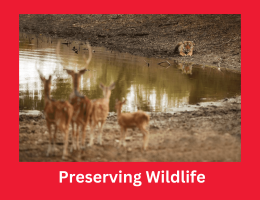
The Significance and Ethics of Digital Livestock Farming
- By admin --
- Friday, 24 May, 2024
1. Introduction
The growing call for for animal merchandise has caused large adjustments in animal farming practices, with a shift toward extra intensive and industrialized techniques of animal production. As a result, animal welfare and sustainability have come to be vital concerns for customers, policymakers, and stakeholders within the animal agriculture industry. This has brought about the improvement of new technology and farming practices, which include precision and virtual cattle farming, which offer capacity advantages for animal welfare and sustainability.
Technologies can be taken into consideration a double-edged sword—some thing this is truely exemplified in cattle farming. For example, deepfake technologies were drawing interest these days. Such technologies are used mostly in malicious applications, but they can also be included with virtual fact to decorate animal welfare. To illustrate, think that a calf is struggling emotionally because of the absence of a mother that has been sent for slaughter. The technologies in question may be harnessed to create a digital simulation of the mom cow that may offer comfort to the calf and beautify its emotional nicely-being.
2. Precision Livestock Farming, Digital Livestock Farming and Smart Livestock Farming
To start, allow us to discover the center notions that shall occupy the stakeholders, specifically precision cattle farming, digital farm animals farming and, in addition smart livestock farming.
Precision farm animals farming (PLF) terminology has been used for over 10 years. PLF may be defined as “the management of cattle manufacturing the use of the ideas and technology of technique engineering”. Its reason is to “enhance the efficiency of manufacturing whilst growing animal and human welfare, via applying advanced records and communication technology (ICT), targeted useful resource use and specific control of the production technique”.
More recently, PLF has been described as farm control based totally on non-stop automated actual-time tracking and manage of manufacturing/duplicate, animal fitness and welfare, and the environmental impact of livestock production. However, as we shall see presently, this is a definition that displays the ways in which PLF has been shifting towards virtual cattle farming because it emphasizes actual-time tracking and control, some thing that has been feature of the virtual farming transformation. Accordingly, the preceding definition supplied above is extra appropriate for our functions of observing the distinction among precision cattle farming and digital cattle farming.
3. Animal Contentment
Animal contentment is closely associated with productivity. As one may additionally say, “A happy cow is a efficient cow”. It is the essential obligation of farmers and farming industries to make certain that animals stay completely in their short existence span (inclusive of with the aid of displaying herbal conduct, demonstrating playfulness and playing a high-quality of life). DLF incorporates this challenge in the improvement of solutions on the grounds that it can be used to promote animal welfare [16]. Of path, now and again society may be considered venal, as the principle recognition is on maximizing earnings and efficiency, no longer on animal welfare. As researchers, but, we recognize that it is not sustainable to bear in mind earnings alone as a intention in farm animals farming, and DLF serves as a powerful tool on this ethical pursuit. Here are some methods in which DLF can help reap this goal:
Precision management: DLF can offer real-time facts on animal fitness, behavior, and overall performance. This records may be used to perceive capability fitness troubles or changes in behavior which can imply stress, pain, or pain. With this statistics, farmers can intrude early to save you or deal with health troubles, ensuing in higher animal welfare and productiveness.
Environmental monitoring: DLF also can offer actual-time statistics on environmental conditions, such as temperature, humidity, and air high-quality, that may have an effect on animal health and welfare. By monitoring these elements, farmers can make adjustments to enhance animal comfort and decrease the risk of disease.
4. Summary
The ethics of digital farm animals farming is an emerging area that focuses on the moral implications of using virtual technologies in animal agriculture. As using virtual technologies in agriculture maintains to grow, there are several key regions where destiny studies within the ethics of digital farm animals farming is likely to cognizance.
Animal welfare: One of the maximum critical ethical concerns in digital livestock farming is the effect of virtual technology on animal welfare. Future research is probably to awareness on developing and implementing digital technology which could improve animal welfare, together with sensors and other tracking gadgets which can detect signs and symptoms of distress or contamination in animals and trigger suitable interventions.





